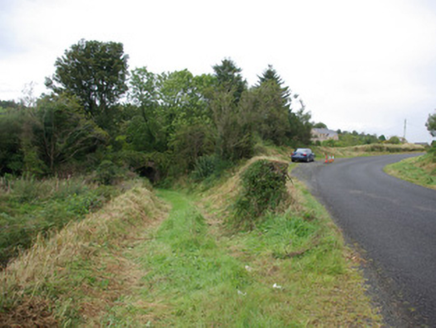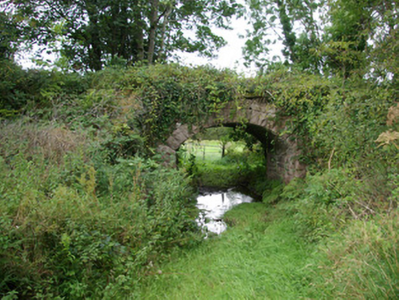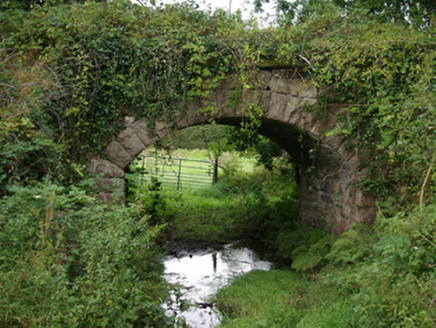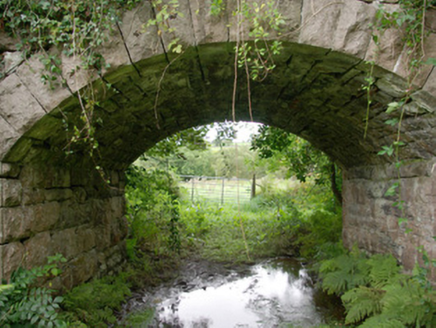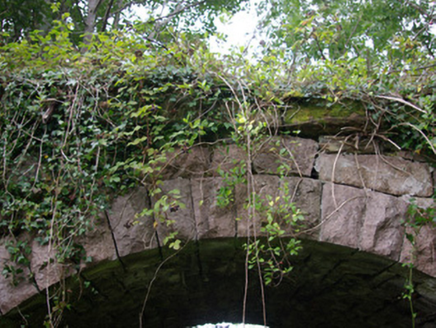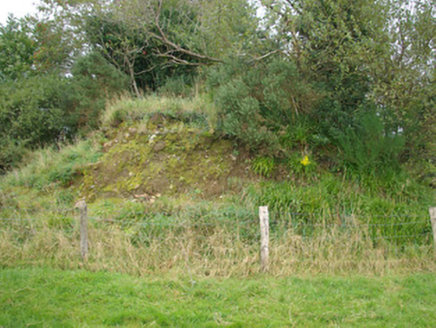Survey Data
Reg No
40906809
Rating
Regional
Categories of Special Interest
Architectural, Technical
Original Use
Bridge
In Use As
Bridge
Date
1890 - 1900
Coordinates
205208, 397146
Date Recorded
19/09/2007
Date Updated
--/--/--
Description
Single-arch bridge, built c. 1895, carrying former Stranorlar to Glenties railway line over laneway/access to farmland. Railway line now out of use with tracks removed (c. 1952). Segmental-headed arch with mildly rock-faced ashlar limestone voussoirs, and with roughly squared rubble stone construction to arch barrel. Coursed and snecked rock-faced squared rubble stone construction to spandrels and to parapets; parapets now collapsing. Vegetation to deck. Former railway embankment now truncated/cleared to either side. Located to the north-west/west of Ballybofey, and to the south-east of Cloghan. Sited adjacent to the south-east of the former Cloghan Railway Station (see 40906802).
Appraisal
This former railway bridge retains its early form and character despite the closure of the railway line in 1952. The good-quality mildly rock-faced masonry used in its construction is typical of Victorian railway engineering and architecture in Ireland. It survives in relatively good condition, which is testament to the quality of its original construction, the skill of the masons involved, and the grandiose long-term ambitions of the railway company that originally constructed it. This bridge does not serve a road, which suggests that it was originally built to accommodate the use of a ford, and later a footbridge, over the River Finn to the north-west, or, to facilitate a local landowner with access to fields etc. It was originally built by the County Donegal Joint Railway Committee as part of the Stranorlar to Glenties narrow gauge (3-foot) railway line, which opened on the March 1895 and closed to passengers in 1947 and closed completely in 1952. This railway bridge forms part of a group of structures associated with this railway line along the Finn Valley, and it is an integral element of the built heritage and transport history of County Donegal. It forms a pair of related structures along with the former railway goods shed (see 40906802) to the north-west.
